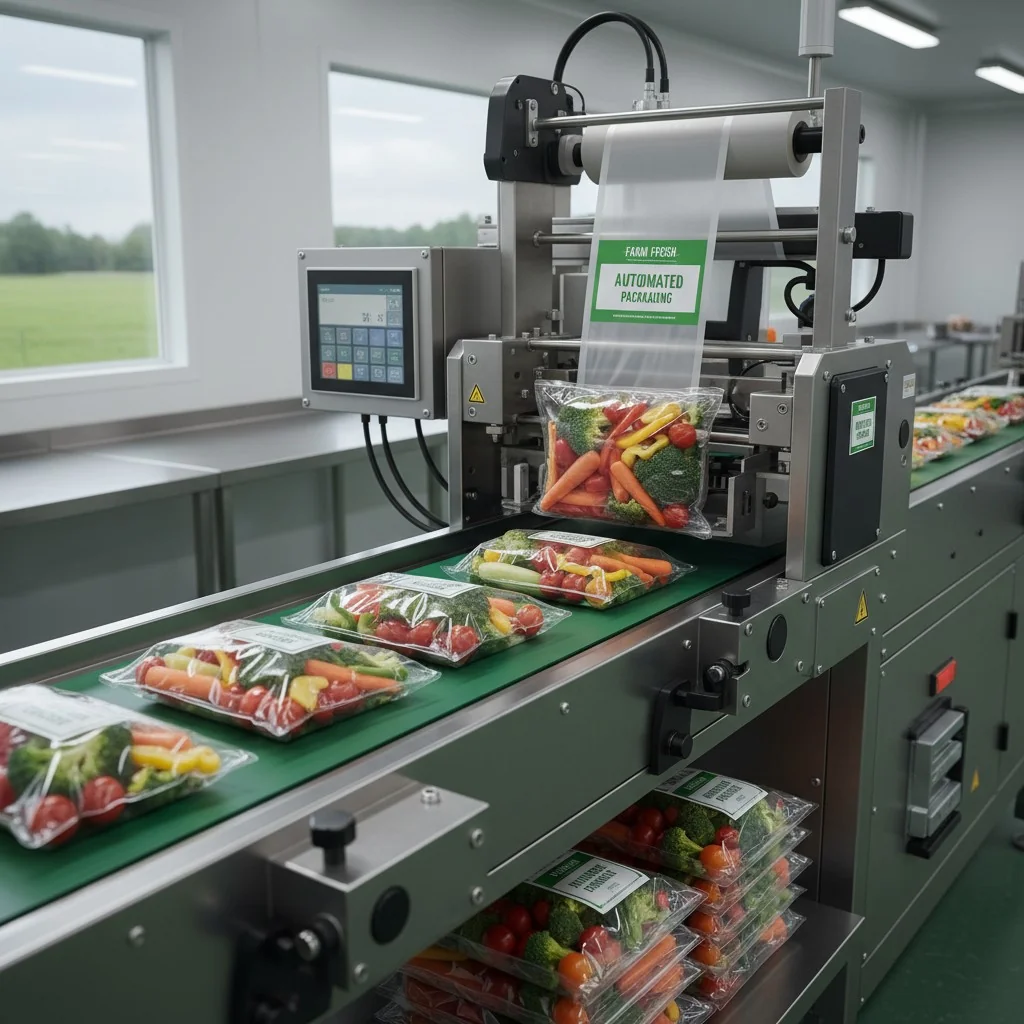
Struggling to keep vegetables fresh? Traditional methods often fail, leading to waste and lost money. There's a better way to preserve freshness and extend shelf life[^1].
The best way to package fresh vegetables is using modified atmosphere packaging (MAP) or vacuum sealing[^2]. These methods control the air around the produce, slowing down spoilage and maintaining quality much longer than simple wrapping. They are the professional standard for a reason.
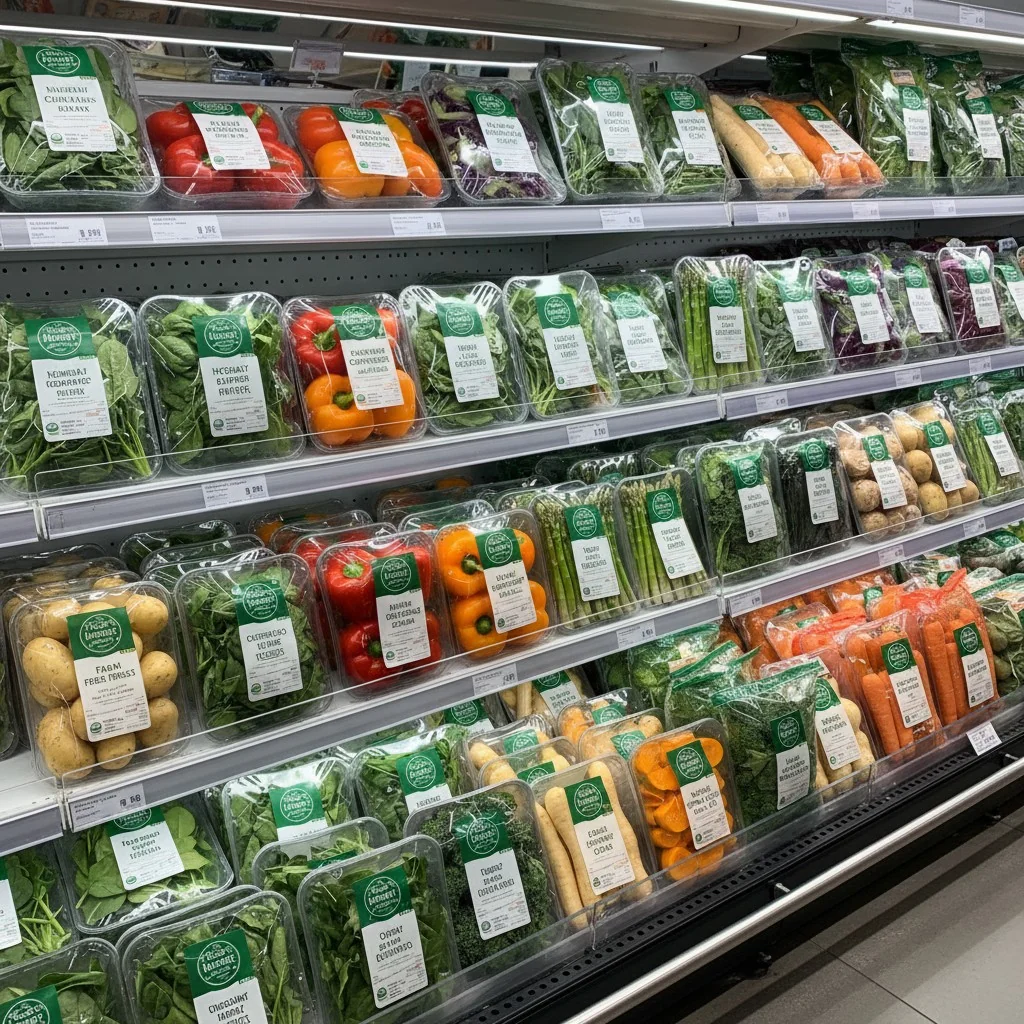
I've seen many great products fail because of poor packaging. Early in my career, a client developed an excellent electronic component, but their packaging couldn't protect it during shipping. They lost a huge order. That taught me a hard lesson: the package is just as important as the product inside. This is especially true for something as delicate as fresh food. Many people reach for a common household item to solve this problem, but is it the right tool for the job? Let's take a closer look at cling film[^3] and see how it really performs.
Wrapping vegetables tightly in any plastic will keep them fresh for weeks.False
Different vegetables have different respiration rates. Wrapping some vegetables too tightly can trap ethylene gas and moisture, accelerating spoilage. Proper packaging must account for the specific needs of the produce.
The type of packaging can significantly impact the nutritional value of vegetables over time.True
Proper packaging that limits exposure to oxygen and light, like vacuum sealing or MAP, can help preserve sensitive vitamins such as Vitamin C and B vitamins, which degrade with exposure to air.
Does cling film keep food fresh?
You wrap your vegetables in cling film, hoping they'll last. But they still wilt and spoil quickly. This common method might not be as effective as you think.
Cling film can help keep food fresh for a short time by creating a barrier against air and moisture loss. However, it's not a perfect seal. It doesn't stop the natural ripening and decay process, which requires more advanced packaging solutions for long-term freshness.
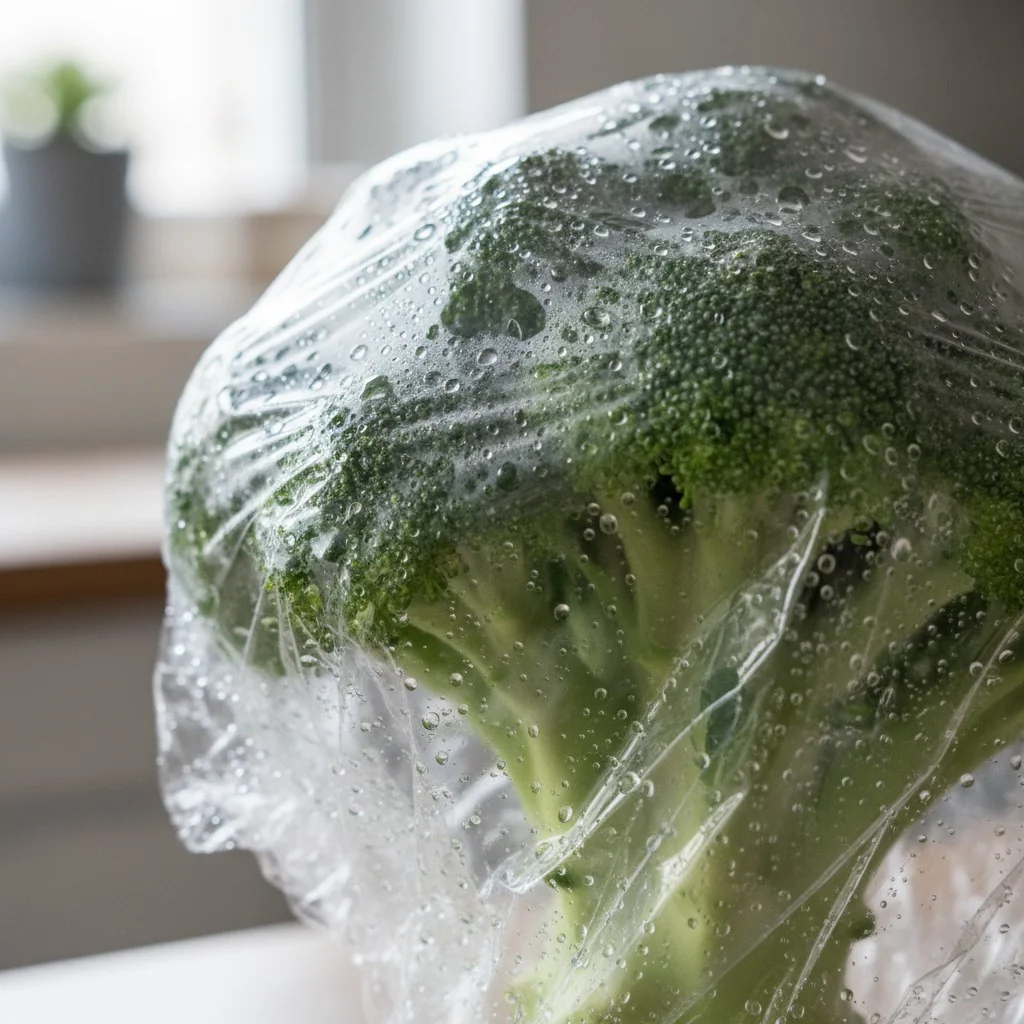
When we talk about keeping food fresh, we are fighting against two main enemies: moisture loss and oxidation. Cling film is a thin plastic sheet that sticks to itself and to containers. It's designed to tackle the first problem, but it's not a complete solution. As a designer, understanding a material's properties is everything.
How Cling Film Works
Cling film’s main job is to create a barrier. It traps moisture inside the wrap, which is why a wrapped cucumber doesn't shrivel up as fast as an unwrapped one. It also provides a limited barrier against oxygen from the outside air. This slows down the process of oxidation, which is what turns sliced apples brown. The material itself, whether it's PVC or PE, is chosen for these barrier properties and its ability to stretch and "cling." This is similar to how we select specific polymers in mold design for their strength, flexibility, or heat resistance.
The Limits of Cling Film
The problem is that this barrier is not perfect. Most consumer-grade cling film is still permeable, meaning oxygen can slowly pass through it. More importantly, fresh vegetables are alive. They respire, taking in oxygen and releasing carbon dioxide, water, and ethylene gas, which promotes ripening. Cling film traps these gases, which can actually speed up spoilage for many types of produce. For truly extending shelf life, you need more control.
| Feature | Cling Film | Vacuum Sealing | Modified Atmosphere Packaging (MAP) |
|---|---|---|---|
| oxygen barrier[^4] | Low to Moderate | Very High | High (Controlled) |
| moisture control[^5] | Good | Excellent | Excellent |
| Gas Control | Poor (Traps Gases) | Excellent (Removes Air) | Excellent (Custom Gas Mix) |
| Shelf Life | Short-Term | Long-Term | Very Long-Term |
Cling film completely stops oxygen from reaching the food.False
Most consumer-grade cling films are permeable to oxygen, which is why food still spoils. The oxygen transmission rate (OTR) is a key metric for packaging films.
Cling film helps reduce moisture loss from vegetables.True
Cling film creates a barrier that traps moisture, preventing vegetables from drying out and wilting quickly. This is one of its primary benefits for short-term storage.
Is cling film food grade?
Worried about chemicals from plastic wrap leaching into your food? It's a valid concern. Using the wrong type of plastic can pose health risks you might not be aware of.
Yes, cling film sold for food use must meet specific safety standards to be considered "food grade[^6]." This means it's tested to ensure that harmful substances do not migrate into the food in significant amounts. Always check for a "food safe" label or symbol.
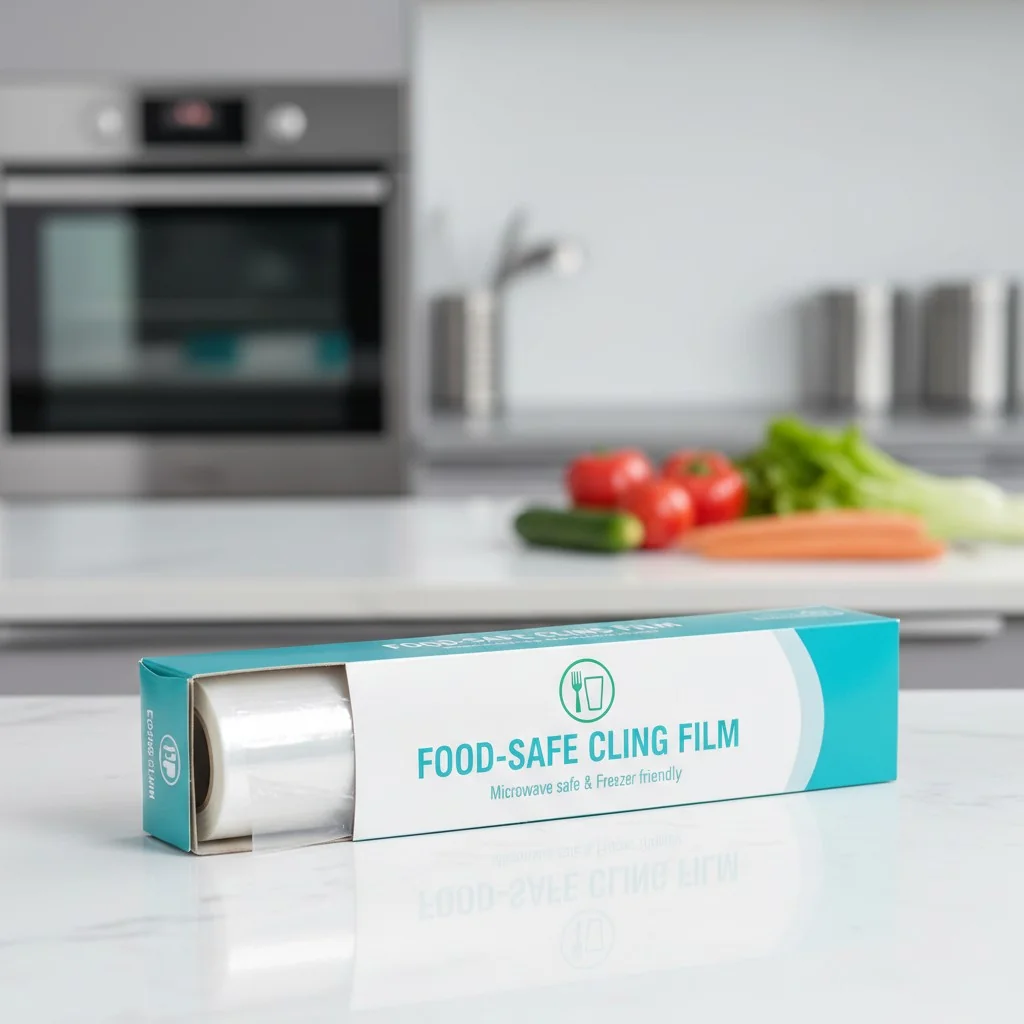
In my line of work, material selection is a matter of success or failure. If I choose the wrong steel for a mold, it could crack under pressure. If I choose the wrong plastic for a part, it could fail in the user's hands. When it comes to food, the stakes are even higher—it's about safety. The term "food grade" is a promise that this material is safe for its intended use.
What "Food Grade" Really Means
For a plastic to be called "food grade" or "food safe," it must pass tests defined by regulatory bodies like the FDA in the United States or the EFSA in Europe. The main test is for "migration." This measures if any chemicals from the plastic can transfer, or migrate, into the food it touches. The amount of migration must be below a strict limit that is considered safe for human consumption. This applies to all food contact materials, from a plastic container to the film that seals it.
Common Materials and Safety Concerns
Most cling films are made from one of two plastics: Polyvinyl Chloride (PVC) or Polyethylene (PE). For years, PVC was the standard because it has great stretch and cling. However, PVC requires plasticizers to make it flexible, and some of these, like certain phthalates, have raised health concerns. As a result, many manufacturers have switched to PE-based films (like LLDPE). PE is naturally flexible and doesn't need these types of plasticizers, making it a popular choice for food-safe applications today.
| Feature | PVC Cling Film | PE Cling Film |
|---|---|---|
| Safety | Potential concerns over plasticizers | Generally considered safer |
| Performance | Excellent stretch and cling | Good stretch, less "clingy" |
| Cost | Generally inexpensive | Slightly more expensive |
| Common Use | Professional/Industrial (less common now) | Household and commercial |
All plastic wraps are made from the same material.False
Cling films are primarily made from Polyvinyl Chloride (PVC) or Polyethylene (PE). PVC often contains plasticizers for flexibility, while PE-based films are generally considered safer as they don't require them.
Food-grade plastics undergo rigorous testing for safety.True
Regulatory bodies like the FDA and EFSA require migration testing to ensure that chemical components from the plastic do not transfer to food at levels that could be harmful to human health.
What are the disadvantages of cling film?
Cling film seems convenient, but its environmental impact[^7] is huge. Plus, it's often frustrating to use and not a perfect solution for freshness. There are better, more sustainable options.
The main disadvantages of cling film are its significant environmental impact (single-use plastic, difficult to recycle), potential health concerns with certain types (PVC), and limited effectiveness for long-term food preservation compared to other methods. It's also often difficult to handle.
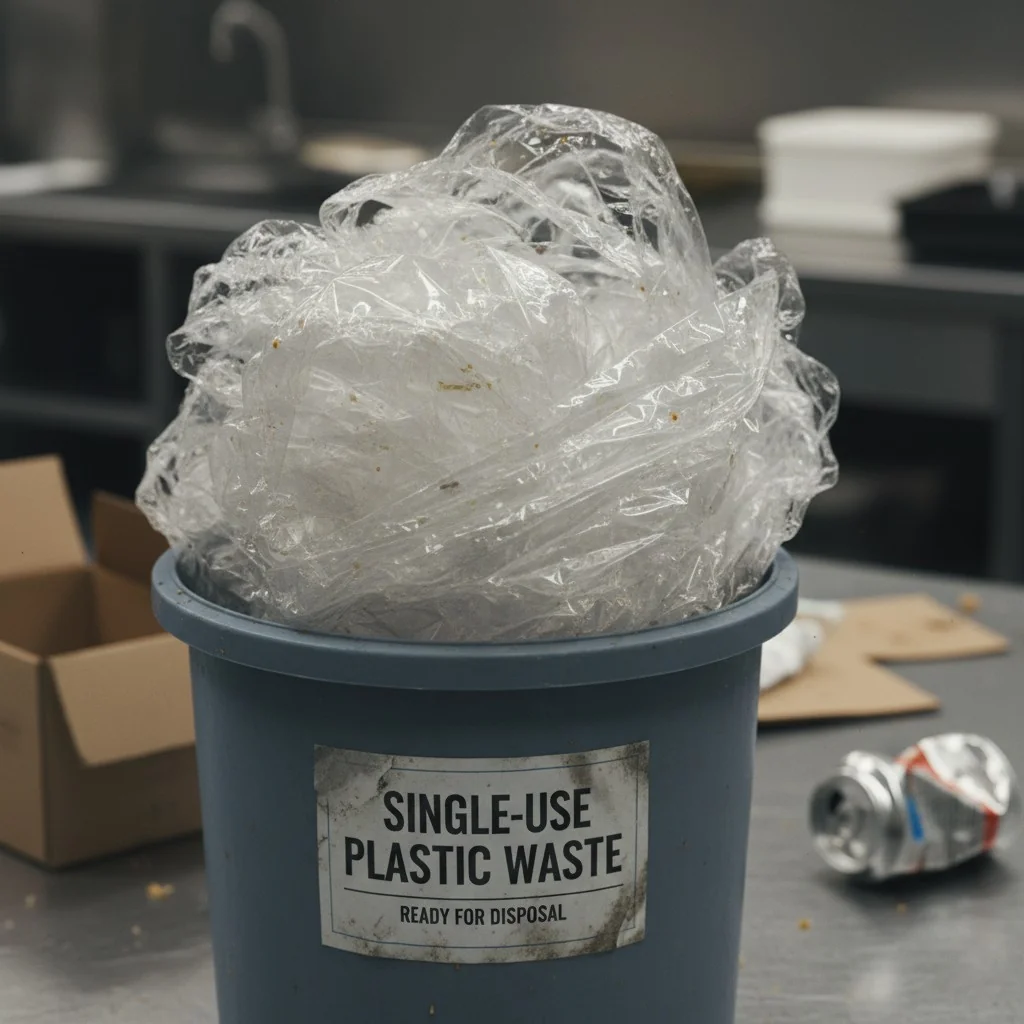
I believe in building things that last. Whether it's a high-quality mold that can produce millions of parts or a business that supports families, durability and efficiency matter. That's why I find it hard to accept solutions that are wasteful by design. Cling film is a perfect example of a product with major drawbacks that are often overlooked for the sake of convenience.
Environmental Concerns
This is the biggest issue. Cling film is a single-use product that is almost impossible to recycle in standard municipal systems. It’s often contaminated with food, and its flimsy nature tangles up recycling machinery. As a result, nearly all of it ends up in landfills or, worse, in our oceans. As someone who designs products, I feel a responsibility to think about the entire lifecycle, from creation to disposal. The environmental cost of cling film is simply too high.
Performance Limitations and Better Solutions
Beyond the environmental problems, cling film just doesn't perform that well for long-term storage, as we've discussed. This is where modern engineering comes in. For industrial food packaging, companies use highly efficient machines that offer far superior solutions. For example, a fresh food packaging machine from a company like China XiaoSen Pack doesn't just wrap food; it creates a complete preservation system. These machines often use Modified Atmosphere Packaging (MAP), where they replace the air in the package with a specific gas mixture that dramatically slows spoilage. The trays they use are formed in molds, and the sealing process is a precise engineering feat. This technology is a perfect example of how our world of molding and manufacturing directly creates better, safer, and more efficient solutions for industries like food.
| Feature | Cling Film | Reusable Silicone Lids | Automated MAP Packaging |
|---|---|---|---|
| Reusability | Single-Use | High (Years) | Single-Use (but more efficient) |
| Preservation | Low | Moderate | Very High |
| Waste | High | Very Low | Low (Optimized material use) |
| Convenience | Moderate (Can be fussy) | High | N/A (Industrial scale) |
Cling film is easily recyclable with other household plastics.False
Cling film is typically a #3 (PVC) or #4 (LDPE) plastic. Its flimsy nature and food contamination make it very difficult to recycle in most municipal programs, and it often ends up in landfills.
Automated packaging machines can reduce plastic waste compared to manual wrapping.True
Machines like those from XiaoSen Pack are optimized to use the exact amount of film needed for each package, creating a tight seal and minimizing the waste generated from torn or excess film common in manual wrapping.
Conclusion
Choosing the right packaging is key for freshness and safety. While cling film has its place, understanding its limits and exploring advanced solutions is crucial for quality results.
References
[^1]: Understand the various factors that influence how long fresh vegetables can stay edible.
[^2]: Learn about vacuum sealing techniques that effectively remove air and moisture, enhancing food preservation.
[^3]: Discover the pros and cons of using cling film for food storage and its impact on freshness.
[^4]: Find out how oxygen barriers work in packaging to prevent spoilage and maintain food quality.
[^5]: Explore the importance of moisture control in packaging and its role in extending food freshness.
[^6]: Learn about the safety standards that define food grade materials and their importance in food packaging.
[^7]: Investigate the environmental concerns associated with cling film and alternatives that are more sustainable.
